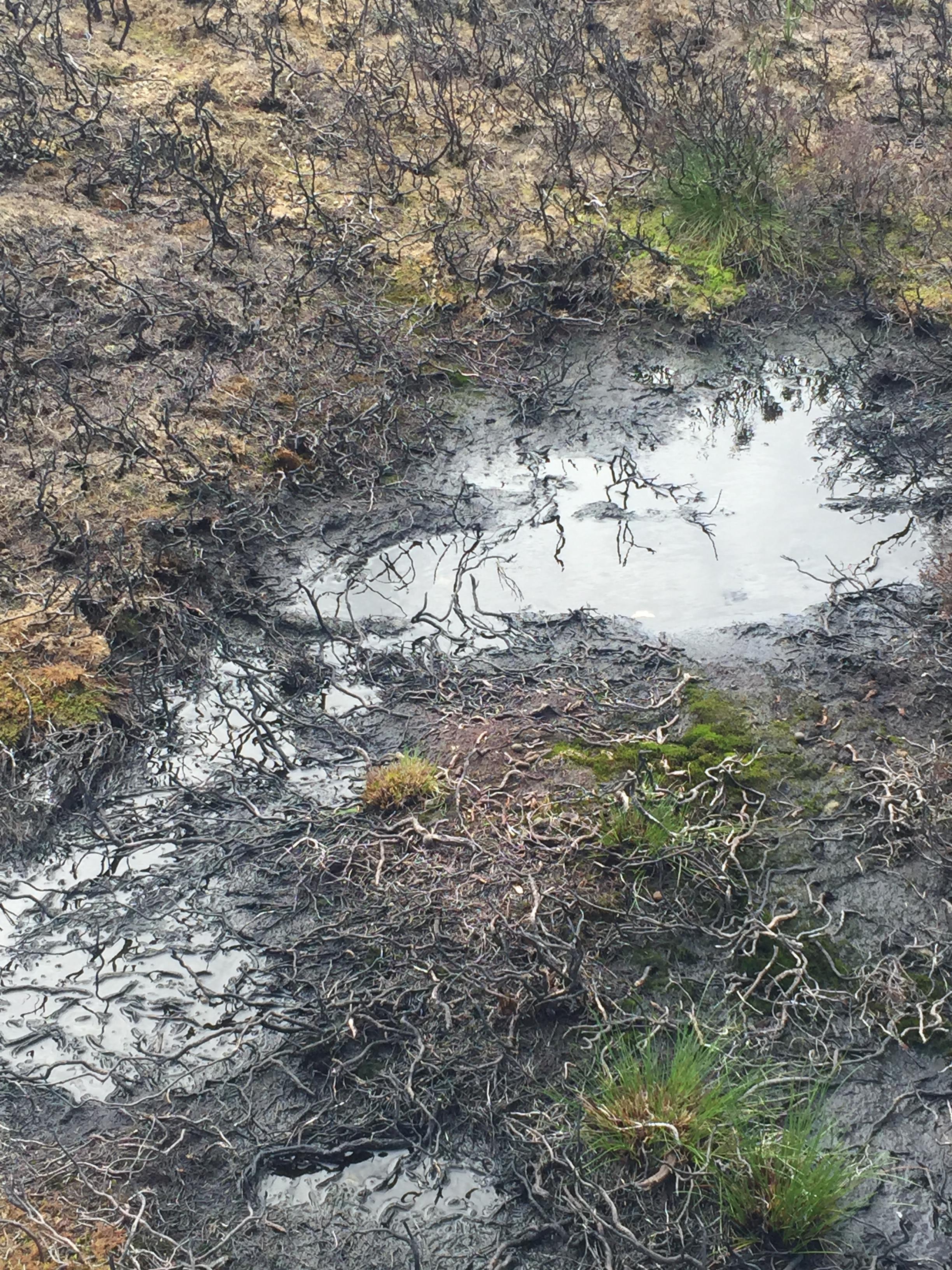Burning of what looks like a blanket bog – difficult to tell sometimes when it’s burned to a crisp – in a National Park. Yorkshire Dales this time.
Many thanks to Nick Miles for these images.



[registration_form]
Standing up for Nature
Burning of what looks like a blanket bog – difficult to tell sometimes when it’s burned to a crisp – in a National Park. Yorkshire Dales this time.
Many thanks to Nick Miles for these images.



[registration_form]
Comments are closed.
When were these images taken? If recently, clearly against moorland burning regulations on at least three counts – timing, extent, and the fact that it is a blanket bog. A disgraceful act of environmental vandalism, especially if started deliberately. Blanket bog vegetation severely damaged, and invertebrate populations wiped out. Has it been reported to Natural England?
the technical difference between blanket bog and upland heath is the depth of peat (blanket bog has more than 50cm of peat depth), so it’s not really possible to tell whether it was blanket bog or not by looking at it.
You have to poke a stick into it.
Miles – which is a little bit odd isn’t it?
not really Mark.
It’s no odder than taxonomists deciding that our Grass Snakes might actually be Natrix helvetica and not Natrix natrix. Things are separated out into species or habitats based on somewhat arbitrary distinctions; the shape of a foot, the colour of a band, or, in this case, the depth of peat.
Miles – well it is odder than that.
ok perhaps.
But it’s true of anything natral that involves a transition from one thing to another eg wet heath to blanket bog, scrub to woodland, and certainly for any species which hybridise with each other.
These pictures do very much look like blanket bog, with surface peat particularly evident in the lowermost picture. The burn has also happened in the summer because the heather is in flower in the background. However, the burn doesn’t look that severe. The bases of perhaps more than a third of the heather stems are un-charred and much of the moss looks unburnt, although it may have been damaged by the heat of the blaze. It would be interesting to know more about the location of the burn and its cause.
That looks much better – you’ll be able to see the raptors (and grouse) much more easily so you can shoot them. The end is coming for these people – we just need to keep up the pressure on politicians and disseminate the message to the public.
It does look like a spring burn, the habitat destruction takes a long time to start to heal.
Clearly peatland, whether its wet heat or blanket bog? I would say the surface looks more like bog than heath… but you do need to take the bung of the end of your walking pole and push it in till you hit the sub-soil. If you believe in burning, then this is a poorly managed burn, there is a lot of exposed burnt peat.
I think the interesting thing to debate is the surface water… flooded runnels like this in the summer mean that the water table is at the surface and these are permanently wet. They have burnt the water margins. Tsk Tsk. But here is the question… permanent water…. it would be illegal to use lead shot over this area?
Circus – ooooh! The sting in the tail – interesting point indeed.
At the margin of bog / wet heath…if you can burn the heather then do so. Then it’ll make it drier and then you can have more heather to burn. Repeat when you can, ideally as part of an agreed (SSSI) management regime and of course in line with the burning code. All that wet harbours vectors of disease too, so you can cut back on dosing !
Job done.
Why is burning deep peat (blanket bog) deemed to be unacceptable but burning shallow peat (which is ofter drier) seen to be OK? Isn’t something that is thinner and drier even more likely to get damaged by fire? Where is the science to say that shallow peats are fire-proof?
Its not really different at all…the two habitats can look different at their extremes but there is a very smooth transition. The main problem is that blanket bog is defined by having an accumulation of at least 0.5m of peat. The muirburn code (in its current form) says “dont burn blanket bog”, and says very little about wet heath.
You would have to hope that this will be addressed when the code is revised….but as the revision is being undertaken by the estate owners (the Moorland Forum) I wouldnt hold out too much hope…
http://muirburncode.blogspot.co.uk/
It is difficult to confirm as blanket bog without a wider view.
I know a few areas like this which form where water doesn’t drain as freely as the surrounding ground. Though small, they are usually of some interest, and it is better to burn round them if possible.
However, in good burning conditions,( damp ground, light breeze), I have seen fires skip over them taking the old heather stalks, and actually encouraging growth of various mosses for a few years, until the heather got established again.
Perhaps “various mosses” are not the biodiversity boosting rare species that are destroyed by the fire. Fire destroys the habitat and results in a simpler habitat with a lower biodiversity. Good for a few species bad for the majority.